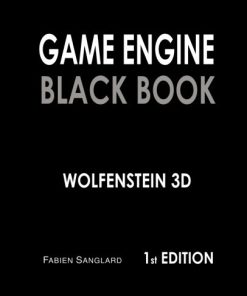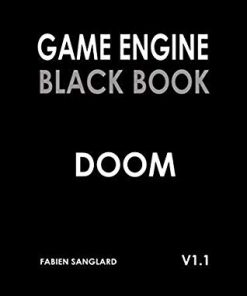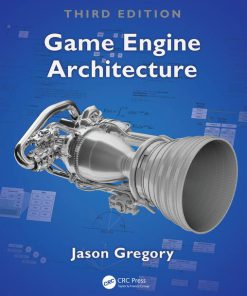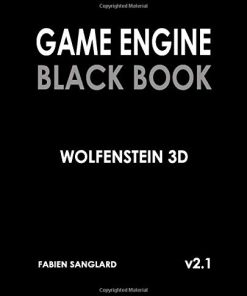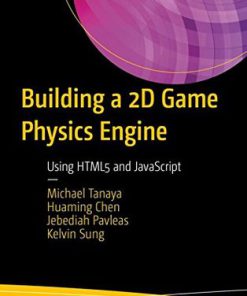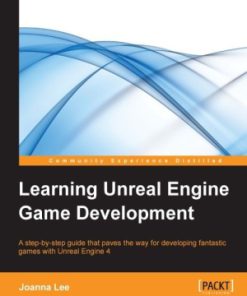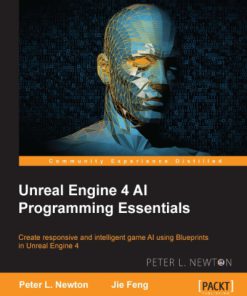Game Engine Architecture 3rd edition by Jason Gregory 1351974271 9781351974271
$50.00 Original price was: $50.00.$25.00Current price is: $25.00.
Game Engine Architecture 3rd edition by Jason Gregory – Ebook PDF Instant Download/DeliveryISBN: 1351974271, 9781351974271
Full download Game Engine Architecture 3rd edition after payment.
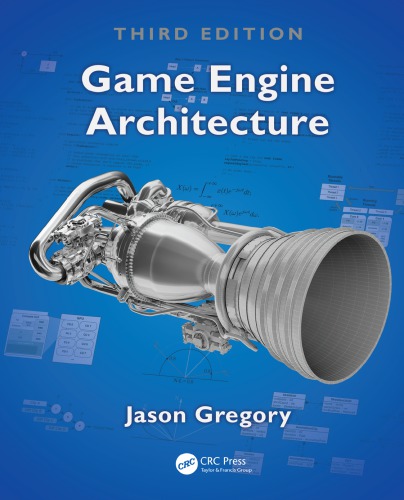
Product details:
ISBN-10 : 1351974271
ISBN-13 : 9781351974271
Author: Jason Gregory
In this new and improved third edition of the highly popular Game Engine Architecture, Jason Gregory draws on his nearly two decades of experience at Midway, Electronic Arts and Naughty Dog to present both the theory and practice of game engine software development. In this book, the broad range of technologies and techniques used by AAA game studios are each explained in detail, and their roles within a real industrial-strength game engine are illustrated. New to the Third Edition This third edition offers the same comprehensive coverage of game engine architecture provided by previous editions, along with updated coverage of: computer and CPU hardware and memory caches, compiler optimizations, C language standardization, the IEEE-754 floating-point representation, 2D user interfaces, plus an entirely new chapter on hardware parallelism and concurrent programming. This book is intended to serve as an introductory text, but it also offers the experienced game programmer a useful perspective on aspects of game development technology with which they may not have deep experience. As always, copious references and citations are provided in this edition, making it an excellent jumping off point for those who wish to dig deeper into any particular aspect of the game development process. Key Features Covers both the theory and practice of game engine software development Examples are grounded in specific technologies, but discussion extends beyond any particular engine or API. Includes all mathematical background needed. Comprehensive text for beginners and also has content for senior engineers.
Game Engine Architecture 3rd Table of contents:
I Foundations
1 Introduction
1.1 Structure of a Typical Game Team
1.2 What Is a Game?
1.3 What Is a Game Engine?
1.4 Engine Differences across Genres
1.5 Game Engine Survey
1.6 Runtime Engine Architecture
1.7 Tools and the Asset Pipeline
2 Tools of the Trade
2.1 Version Control
2.2 Compilers, Linkers and IDEs
2.3 Profiling Tools
2.4 Memory Leak and Corruption Detection
2.5 Other Tools
3 Fundamentals of Software Engineering for Games
3.1 C++ Review and Best Practices
3.2 Catching and Handling Errors
3.3 Data, Code and Memory Layout
3.4 Computer Hardware Fundamentals
3.5 Memory Architectures
4 Parallelism and Concurrent Programming
4.1 Defining Concurrency and Parallelism
4.2 Implicit Parallelism
4.3 Explicit Parallelism
4.4 Operating System Fundamentals
4.5 Introduction to Concurrent Programming
4.6 Thread Synchronization Primitives
4.7 Problems with Lock-Based Concurrency
4.8 Some Rules of Thumb for Concurrency
4.9 Lock-Free Concurrency
4.10 SIMD/Vector Processing
4.11 Introduction to GPGPU Programming
5 3D Math for Games
5.1 Solving 3D Problems in 2D
5.2 Points and Vectors
5.3 Matrices
5.4 Quaternions
5.5 Comparison of Rotational Representations
5.6 Other Useful Mathematical Objects
5.7 Random Number Generation
II Low-Level Engine Systems
6 Engine Support Systems
6.1 Subsystem Start-Up and Shut-Down
6.2 Memory Management
6.3 Containers
6.4 Strings
6.5 Engine Configuration
7 Resources and the File System
7.1 File System
7.2 The Resource Manager
8 The Game Loop and Real-Time Simulation
8.1 The Rendering Loop
8.2 The Game Loop
8.3 Game Loop Architectural Styles
8.4 Abstract Timelines
8.5 Measuring and Dealing with Time
8.6 Multiprocessor Game Loops
9 Human Interface Devices
9.1 Types of Human Interface Devices
9.2 Interfacing with a HID
9.3 Types of Inputs
9.4 Types of Outputs
9.5 Game Engine HID Systems
9.6 Human Interface Devices in Practice
10 Tools for Debugging and Development
10.1 Logging and Tracing
10.2 Debug Drawing Facilities
10.3 In-Game Menus
10.4 In-Game Console
10.5 Debug Cameras and Pausing the Game
10.6 Cheats
10.7 Screenshots and Movie Capture
10.8 In-Game Profiling
10.9 In-Game Memory Stats and Leak Detection
III Graphics, Motion and Sound
11 The Rendering Engine
11.1 Foundations of Depth-Buffered Triangle Rasterization
11.2 The Rendering Pipeline
11.3 Advanced Lighting and Global Illumination
11.4 Visual Effects and Overlays
11.5 Further Reading
12 Animation Systems
12.1 Types of Character Animation
12.2 Skeletons
12.3 Poses
12.4 Clips
12.5 Skinning and Matrix Palette Generation
12.6 Animation Blending
12.7 Post-Processing
12.8 Compression Techniques
12.9 The Animation Pipeline
12.10 Action State Machines
12.11 Constraints
13 Collision and Rigid Body Dynamics
13.1 Do You Want Physics in Your Game?
13.2 Collision/Physics Middleware
13.3 The Collision Detection System
13.4 Rigid Body Dynamics
13.5 Integrating a Physics Engine into Your Game
13.6 Advanced Physics Features
14 Audio
14.1 The Physics of Sound
14.2 The Mathematics of Sound
14.3 The Technology of Sound
14.4 Rendering Audio in 3D
14.5 Audio Engine Architecture
14.6 Game-Specific Audio Features
IV Gameplay
15 Introduction to Gameplay Systems
15.1 Anatomy of a Game World
15.2 Implementing Dynamic Elements: Game Objects
15.3 Data-Driven Game Engines
15.4 The Game World Editor
16 Runtime Gameplay Foundation Systems
16.1 Components of the Gameplay Foundation System
16.2 Runtime Object Model Architectures
16.3 World Chunk Data Formats
16.4 Loading and Streaming Game Worlds
16.5 Object References and World Queries
16.6 Updating Game Objects in Real Time
16.7 Applying Concurrency to Game Object Updates
16.8 Events and Message-Passing
16.9 Scripting
16.10 High-Level Game Flow
V Conclusion
17 You Mean There’s More?
17.1 Some Engine Systems We Didn’t Cover
17.2 Gameplay Systems
People also search for Game Engine Architecture 3rd:
game engine architecture pdf
3d game engine architecture
2d game engine architecture
unity game engine architecture
c++ game engine architecture
Tags: Game Engine, Architecture, Jason Gregory, Engine Architecture
You may also like…
Computers - PC & Video Games
Game Engine Black Book: Wolfenstein 3D 1st Edition Fabien Sanglard
Computers - Programming
Computers - PC & Video Games
Game Engine Architecture 3rd Edition by Jason Gregory ISBN 9781138035454 1138035459
Computers - PC & Video Games
Uncategorized
Computers - Programming
Computers - Programming
MonoGame Mastery: Build a Multi-Platform 2D Game and Reusable Game Engine Jarred Capellman
Computers - Programming




